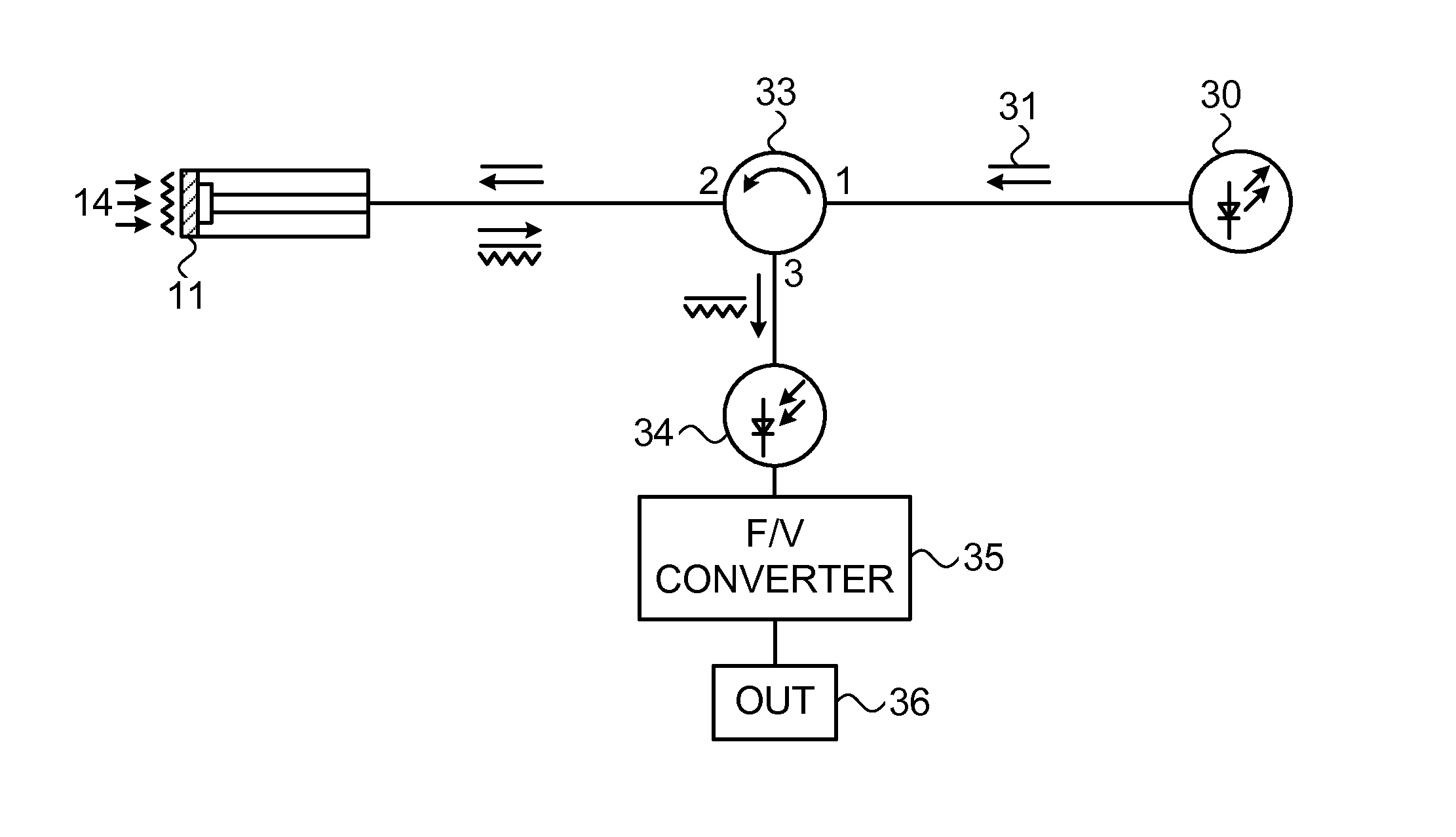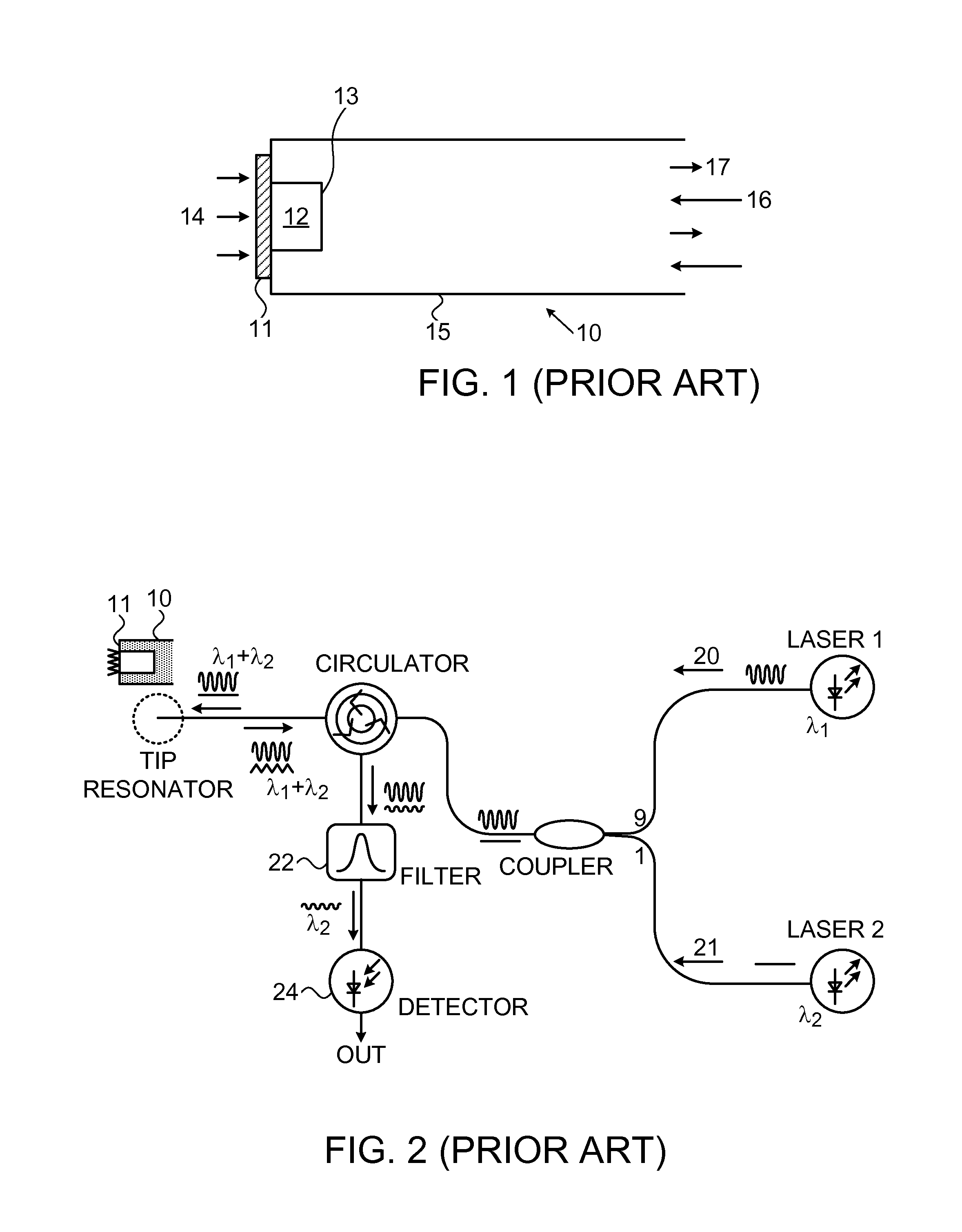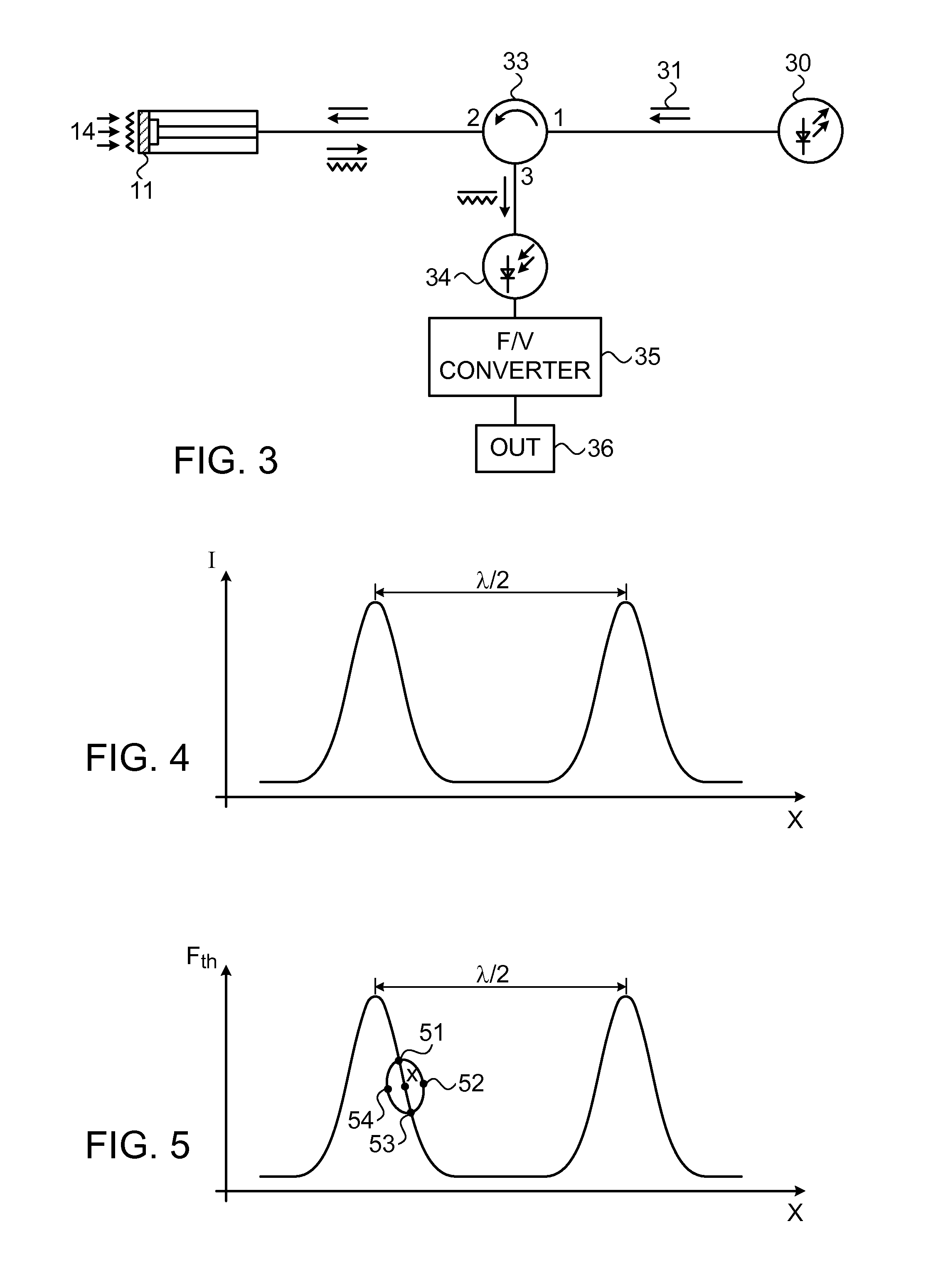On-fiber optomechanical cavity based sensor
a cavity-based sensor and optomechanical technology, applied in the field of sensors, can solve the problems of bulky and bulky external electronic excitation or actuation systems, and the need for precise b>3/b>-dimensional nanoscale alignment of optical elements, and achieve the effect of significantly increasing the amplitude of its vibrations
- Summary
- Abstract
- Description
- Claims
- Application Information
AI Technical Summary
Benefits of technology
Problems solved by technology
Method used
Image
Examples
Embodiment Construction
[0032]Reference is now made to FIG. 3, which illustrates schematically a novel exemplary optomechanical measurement system, of the type described in the present disclosure. The system of FIG. 3 differs from that of the prior art in that only a single CW laser 30 is required, thereby substantially reducing the cost of the laser sources required for the system, and the complexity of the detection system. This enables the construction of a lower cost and more compact system, thereby increasing the universality and acceptance of such systems. The single laser source outputs a CW beam 31 at constant power, which is used both for inducing self oscillation of the resonator beam 11, and for measurement of the resonance frequency of the resonator beam, which is used for determining the level of the parameter 14 being measured by the system. The laser source is preferably a diode laser, and if the output is not sufficiently stabilized by the supplied laser / power supply package itself, a level...
PUM
 Login to View More
Login to View More Abstract
Description
Claims
Application Information
 Login to View More
Login to View More - R&D
- Intellectual Property
- Life Sciences
- Materials
- Tech Scout
- Unparalleled Data Quality
- Higher Quality Content
- 60% Fewer Hallucinations
Browse by: Latest US Patents, China's latest patents, Technical Efficacy Thesaurus, Application Domain, Technology Topic, Popular Technical Reports.
© 2025 PatSnap. All rights reserved.Legal|Privacy policy|Modern Slavery Act Transparency Statement|Sitemap|About US| Contact US: help@patsnap.com



